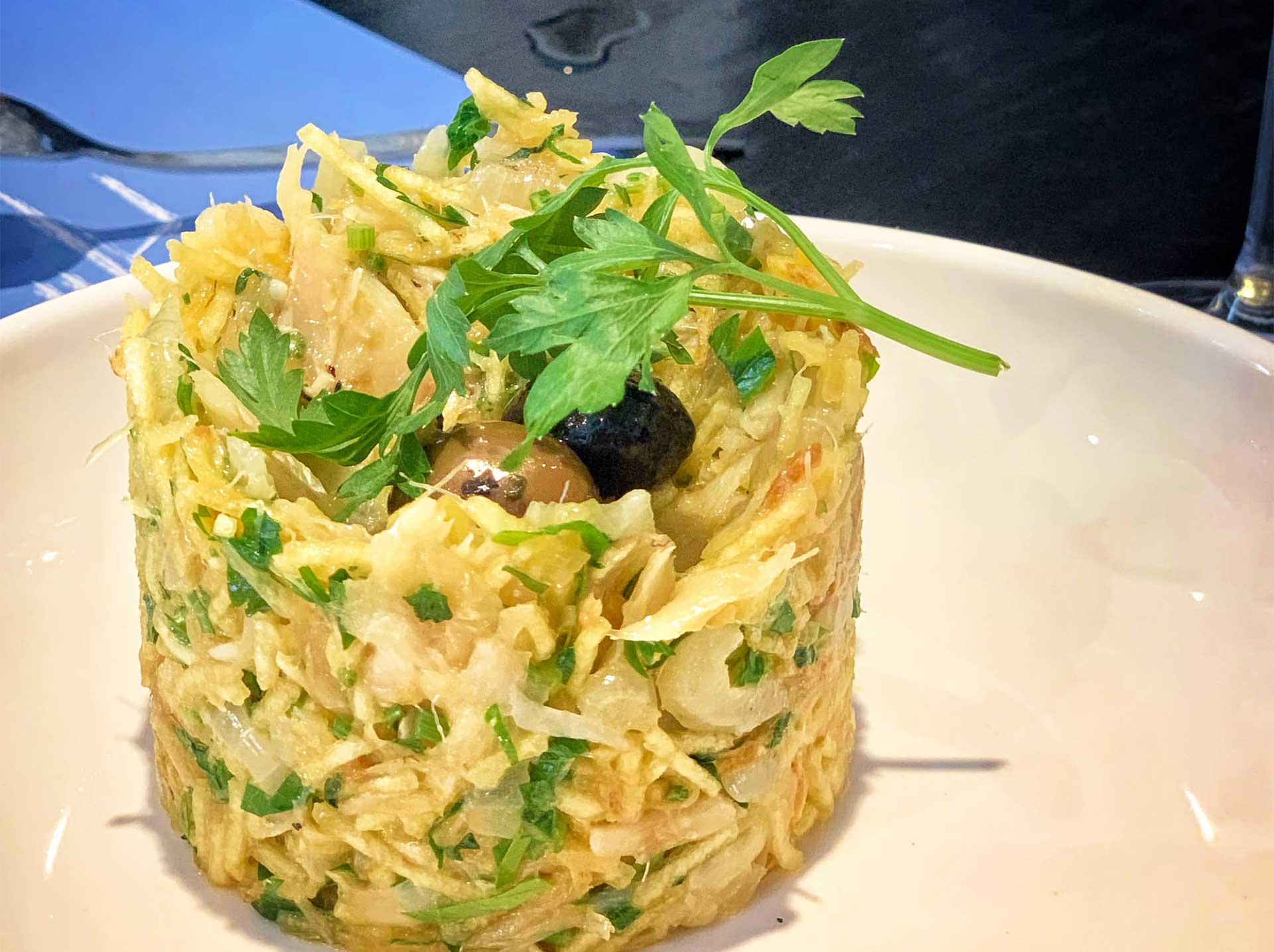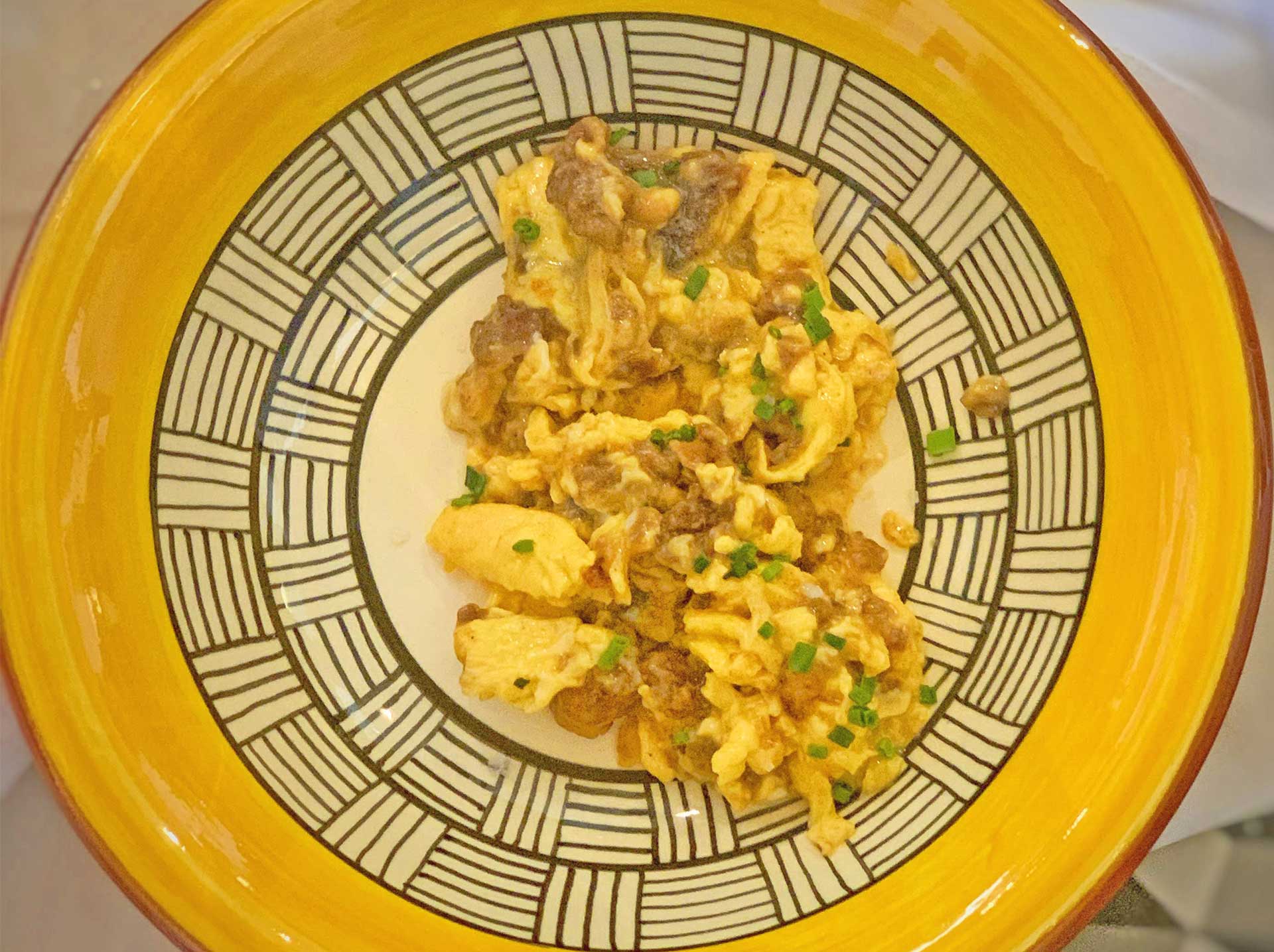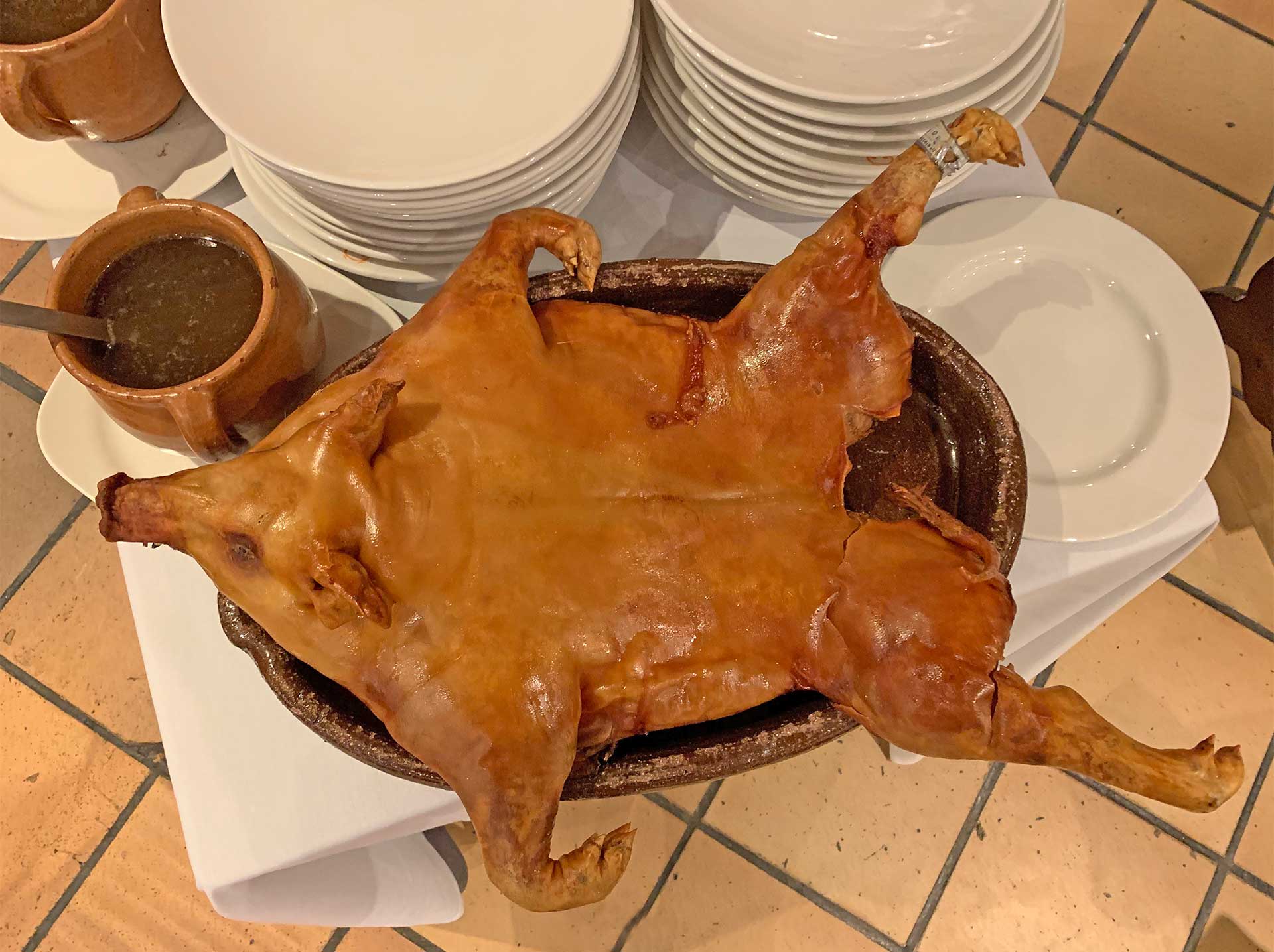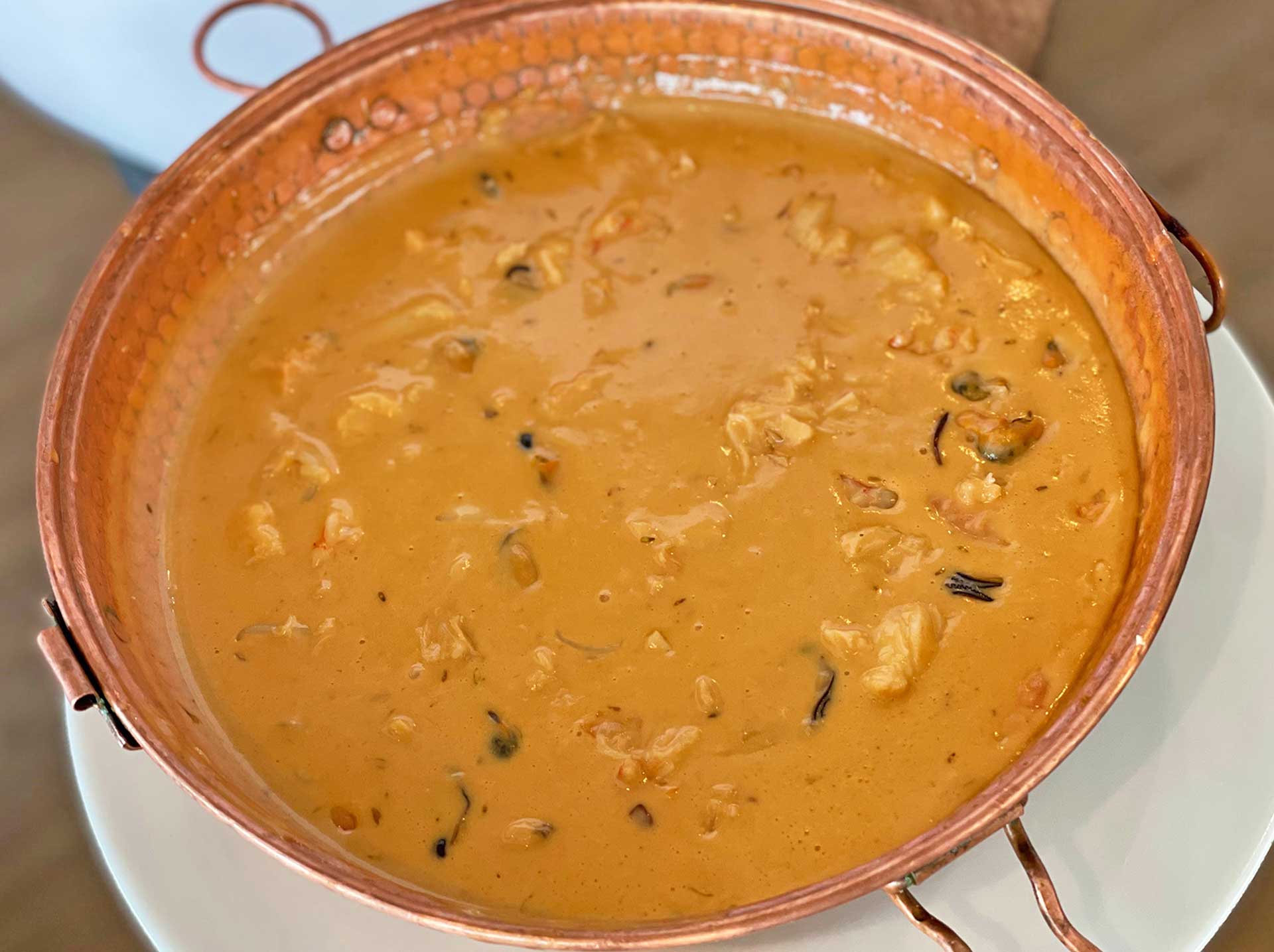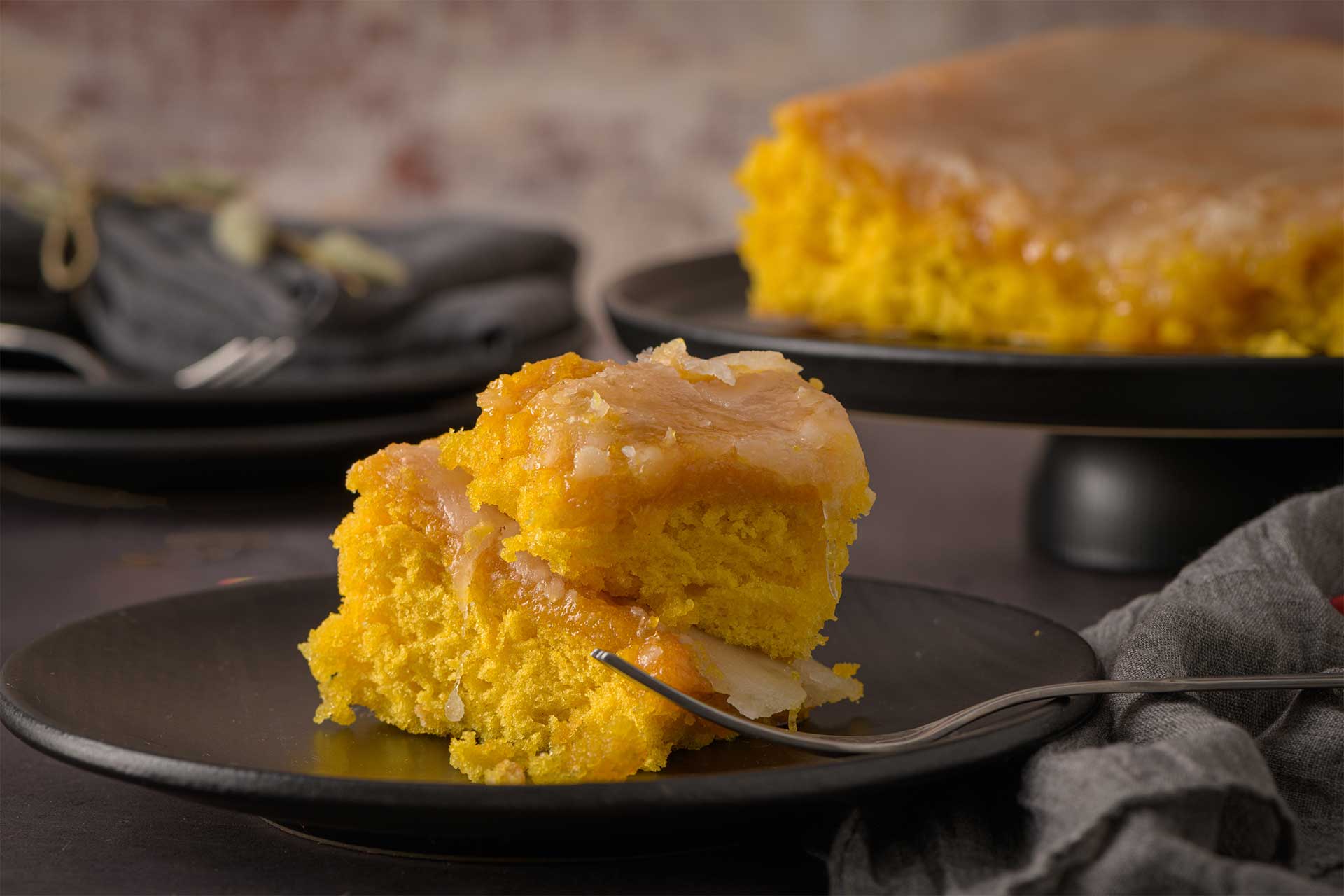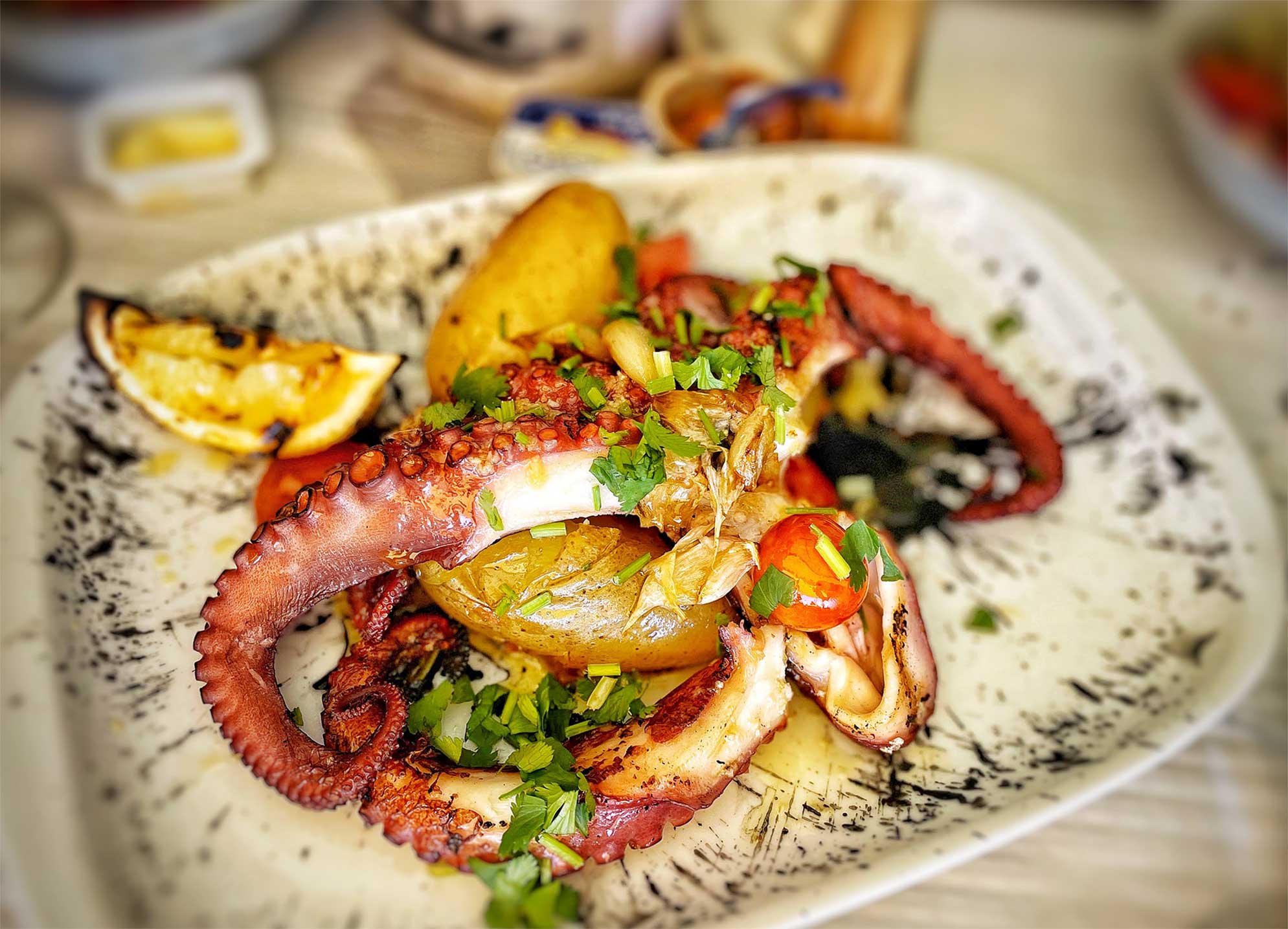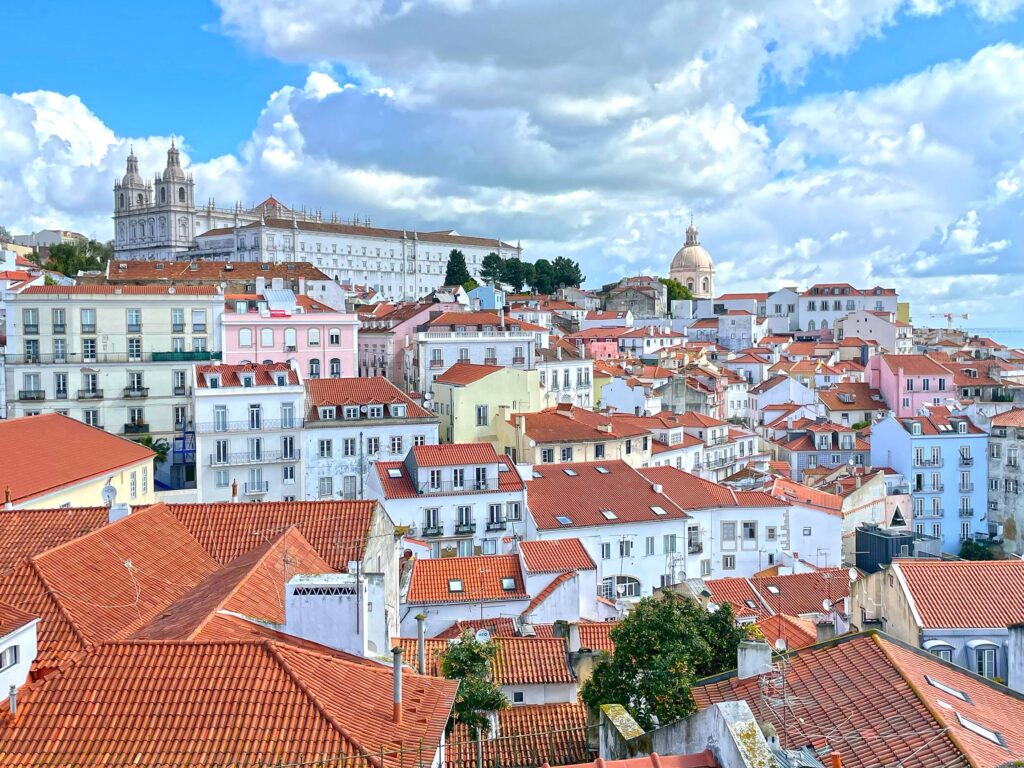Many people have had their first foray into Portuguese food with a Pastel de Nata or Bacalhau, but the country’s gastronomy goes so much further than that — and we want to show you!
From seafood-studded stews to juicy suckling pig, tasty meat pies with an Indian influence, succulent grilled sardines, and more, Portugal food is brimming with flavor.
Although there are thousands of dishes that are waiting to be tried, we’ve condensed it down to a list of the thirteen best foods to try when traveling in Portugal.
After trying these traditional Portuguese recipes, from street food, regional specialties, and more, we’ll guarantee you’ll be wanting to buy a ticket to this Iberian Peninsula gem!
1. Bacalhau à Brás
We’re kicking off our list with the pinnacle of Portuguese cuisine: bacalhau!
Bacalhau, which translates to cod in English, is Portugal’s national dish, a symbol of the country’s identity, and one of the most popular foods in restaurants across the country.
Bacalhau is such a go-to staple in Portuguese cuisine that it even has an endearing nickname: fiel amigo, or faithful friend.
There’s an old saying that there are 365 ways to cook cod — one for every day of the week. While that would be an interesting (and lengthy) blog post, we’ve picked two of the best bacalhau recipes: Bacalhau à Brás (cod Brás style) and Bacalhau com Natas (cod with cream).
For now, let’s talk about Bacalhau à Brás. This classic comfort food was invented in Lisbon’s Bairro Alto neighborhood by an innkeeper with the name of Brás — hence the recipe’s name.
The dish begins by taking salted cod and soaking it overnight to remove the salt.
From there, the cod is flaked and combined with an egg mixture, sauteed onions, strips of potatoes, and spices. A few olives and parsley are sprinkled on top for the finishing touch.
2. Bacalhau com Natas
Now that we’ve explored the classic way to make bacalhau, it’s time to take it up a notch. Another popular cod dish in Portugal is Bacalhau com Natas, which translates to cod with cream.
Although the use of dairy products isn’t common in traditional Portuguese dishes, Bacalhau com Natas breaks all of the conventional rules. The result? A rich, decadent dish that’s perfect to replenish your energy after climbing Lisbon’s hills.
The base of Bacalhau com Natas follows a similar cooking process to its à Brás cousin: take baked cod and combine it with onions, baked potatoes, and the special sauce (a bechamel-like mix of butter, flour, milk, and fresh cream). Lastly, the dish is sprinkled with cheese, placed into the oven, and baked until golden.
3 – Amêijoas à Bulhão Pato
What do clams and 19th century poets have in common? No, this isn’t a trick question — it’s the start of our next recipe!
Amêijoas à Bulhão Pato, which translates to Clams a la Bulhão Pato, is a simple yet delicious dish that consists of fresh steamed clams that are drizzled with white wine, garlic, oil, and spices.
Despite the dish’s popularity as a first course, what really makes it interesting is the story (or rather, the person) behind it.
Raimundo Antonio de Bulhão Pato was a poet in the 19th-century who was known for being quite the bon vivant. While writing, traveling, and throwing soirees took up most of his time, Bulhão Pato was also a diehard gourmand. From eating to cooking and everything in between, the poet was especially fond of writing about food and gastronomy — which is exactly how this recipe gets its name.
One theory goes that Bulhão Pato wrote about a chef in one of his works, and the chef was so appreciative that he named a dish after the poet. Another theory notes that Bulhão Pato liked to serve steamed clams at his soirees and readings.
Although we will never find out the real reason behind Amêijoas à Bulhão Pato’s name, we definitely know that it’s a must-try Portuguese dish!
4. Farinheira com Ovos Mexidos
While most people might associate scrambled eggs with breakfast, the Portuguese take it up a notch.
In fact, Farinheira com Ovos Mexidos (Farinheira is a sausage with flour in it – in fact “farina” is the Portuguese word for flour . with scrambled eggs) is a multipurpose snack that doesn’t have to be eaten in the morning. Thanks to its quick preparation and common ingredients, the dish is perfect for morning, afternoon, or night. Traditional Portuguese recipe from the Alentejo region, i’s muito bom!
5. Empadas
If there’s one Portuguese dish that deserves the title of world traveler, it would definitely be the empada.
Back when Portugal was exploring new trade routes in the 16th century, sailors would typically depart from Goa, India, and make their way back to the homeland. Over time, the merchants brought back samosas (Chamuças da Goa), and the cooks in Portugal would try to recreate a similar recipe. Thus, the empada was born.
These tasty pies, typically stuffed with meat or vegetables, are popular Portuguese snacks that are frequently sold at street food stalls across Portugal, Brazil, and even as far as Indonesia and some African countries. A true traveler indeed.

6. Arroz de Marisco
Once upon a time in 2011, there was a contest to determine the 7 Wonders of Gastronomy in Portugal. Nearly 1 million people voted for the recipes that they think represent the country’s cultural and gastronomic heritage — and one particular seafood dish stood out amongst the seven winners: Arroz de Marisco.
Although it was invented in a seaside cafe in Praia de Vieira de Leiria, this dish can be found throughout Portugal’s coast (and, in some cases, even further inland!)
Arroz de Marisco is a decadent blend of seafood, tomatoes, peppers, and rice. However, what really makes it dynamic are the ingredients. The three most common seafood used in the dish are prawns, mussels, and clams, but some recipes may switch it up and add lobster, crab meat, or other shellfish depending on the season.
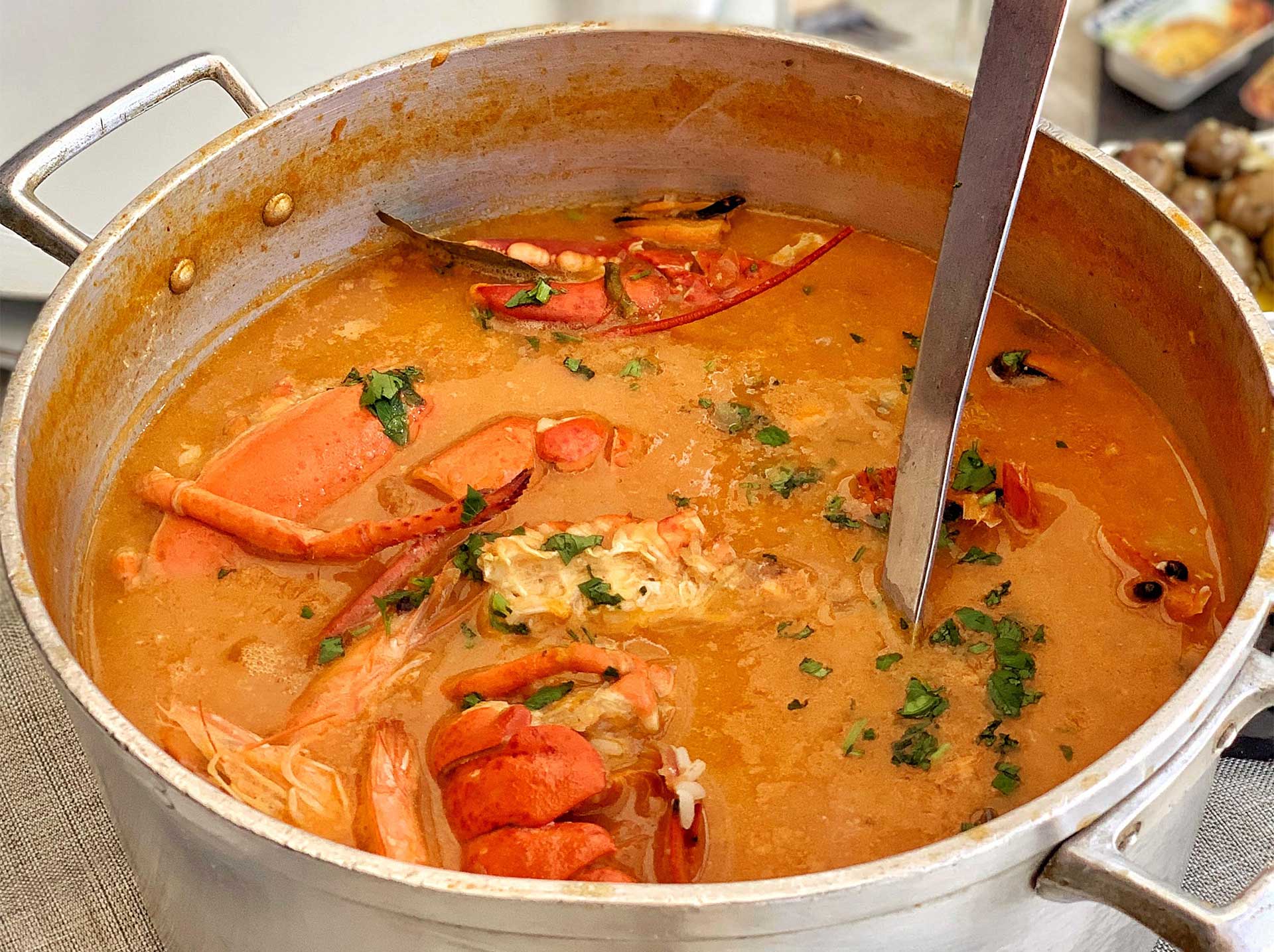
7. Leitão
Portuguese cuisine has dozens of recipes that use pork, but perhaps the apex amongst them is Leitão.
Leitão is a suckling pig that’s seasoned and cooked over a wood fire. The result is a mouthwatering piece of juicy meat with a crunchy outside.
The secret to cooking Leitão is twofold: first, the chef seasons the pig with a piquant mix of garlic, grease, salt, and pepper before being roasted for 2 hours. Secondly, the oven is heated with aromatic wood, such as eucalyptus, to give the meat a deeper flavor.
After reading that tidbit, it probably comes as no surprise that Leitão is one of Portugal’s best dishes — and was also a winner of the 7 Wonders of Gastronomy competition mentioned above!
8. Cataplana
While the Algarve region is typically famous for its golden sand beaches, charming towns, and surfing, its gastronomic claim to fame is a savory seafood stew. An interesting fact is that Cataplana gets its name from the copper saucer-shaped pan that is used to cook the dish!
Cataplana can be made two ways: just seafood or with pork and clam. Like many other Portuguese dishes, the recipe calls for seafood that’s in season: clams, crayfish, mussels, white fish, lobster tail, and prawns are all excellent choices, and in this case they added some cream, yummy!
9. Feijoada
We’ve talked quite a lot about appetizers and main courses, so let’s turn our attention to popular Portuguese side dishes.
Feijoada, which comes from the Portuguese word for bean, feijão, is a delectable stew made of various cuts of meat, vegetables, and beans.
It is the national dish of Brazil and a ubiquitous staple in restaurants across Portuguese-speaking countries. Feijoada is so well-loved that there is a song dedicated to the dish, with lyrics describing the ingredients and how to cook it!
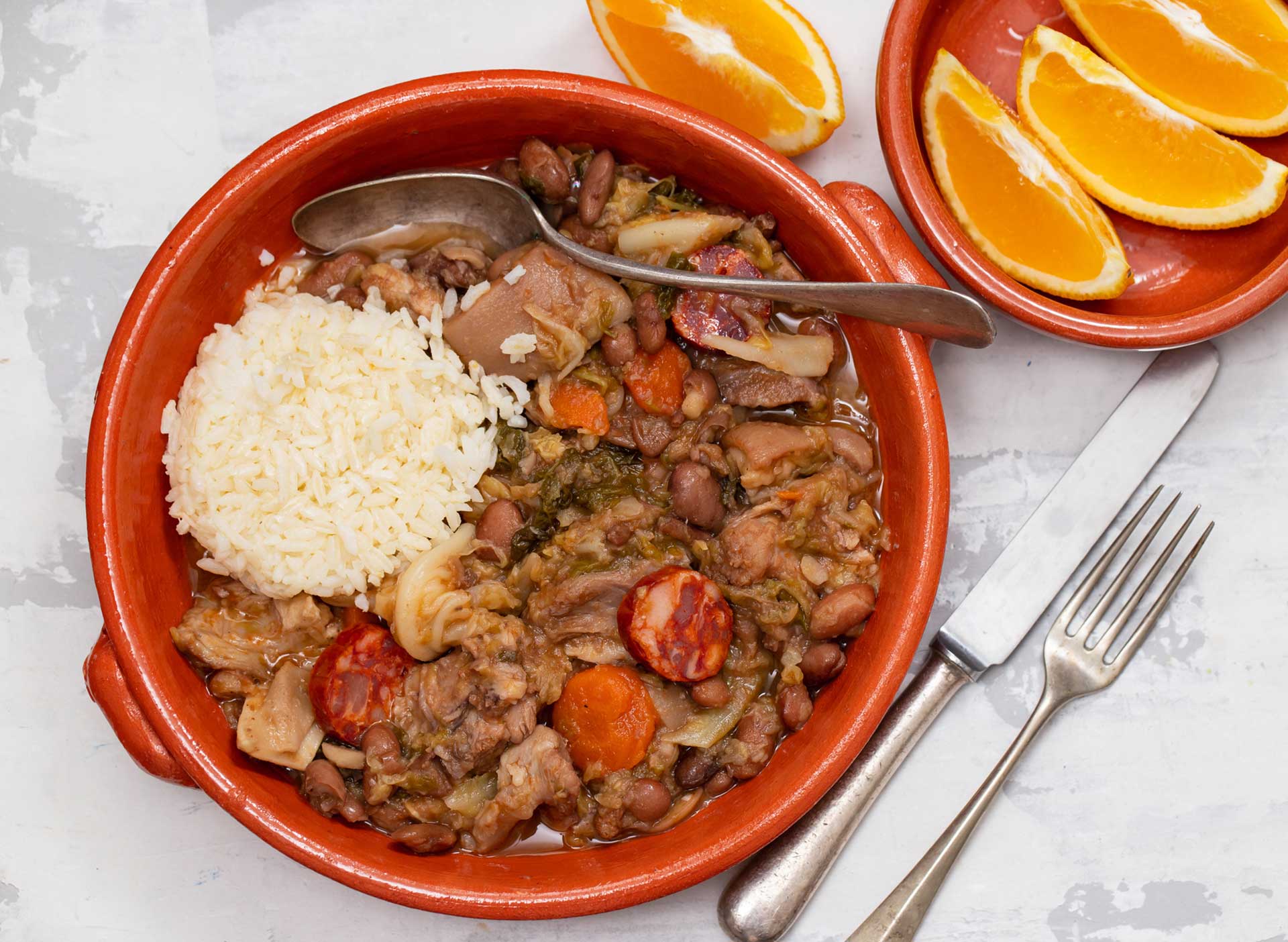
10. Pão de ló
The United States has Angel food cake, the United Kingdom has sponge cake, and Portugal has… Pão de ló!
This fluffy cake traces its roots to the 1700s, with its origins supposedly evolving from the French pain de lof. Thanks to its antiquity and popularity amongst average citizens, the Pão de ló is incredibly simple to make and only has three ingredients: flour, sugar, and eggs.
However, most locals take it a step further and add their own twist, with extras like lemon, orange zest, or powdered sugar. Pão de ló is one of the most popular Easter foods in Portugal and can be found at almost every Easter feast in the country.
11. Polvo à Lagareiro
Since we’re on the topic of festive dishes, Polvo à Lagareiro deserves a special mention.
Commonly served on Christmas Eve, this dish is made by drizzling baked or grilled octopus and placing it on top of crushed potatoes in a herbed garlic oil.
The dish is thought to originate from the medieval Beira province (now known as the Central Region) but is widely enjoyed throughout the country.
12. Sardinhas Grelhadas
Now that we’ve almost reached the end, you can tell Portugal has a lot of seafood and fish dishes — but we’re not done just yet!
Despite dozens of other delectable fish available, Sardinhas Grelhadas remain one of the most loved dishes. In fact, sardines are one of the national icons of Portugal, and there are stores, souvenirs, and even festivals dedicated to this small but mighty fish.
Simply translated to grilled sardines, these succulent snacks are especially popular during events and festivals. Just follow the delicious aroma and you’ll be sure to come across a stand where hundreds of sardines are grilled.
13. Ovos Moles
Let’s end our gastronomic journey through Portugal on a sweet note.
While many Portuguese desserts are rich and indulgent, Ovos Moles deserve particular recognition. Literally translated to soft eggs, these adorable white and yellow pastries are a specialty of Aveiro, which is likened to be the “Portuguese Venice.”
When eating Ovos Moles, be sure to pay special attention to the design.
The pastry gives a subtle nod to its homeland with its shapes: a round piece with ridges is meant to show the barrels that were used in Aveiro’s seaport history; seashells represent the region’s beaches and rivers; and nuts showcase the area’s agriculture.
Preparing Ovos Moles is a multi-day affair, but is well worth the effort. On the first day, the cream is made while the shell is created by mixing flour, oil, and water, and poured into iron molds. On the second day, the cream is piped into the shell, and by day three, the final Ovos Moles are ready!
Whether it’s trying freshly-caught seafood in Porto, sipping on wine in the legendary Douro Valley, or buying a box of the famous Ovo Moles in Aveiro, the best way to get acquainted with the real flavors of Portugal is through a local.
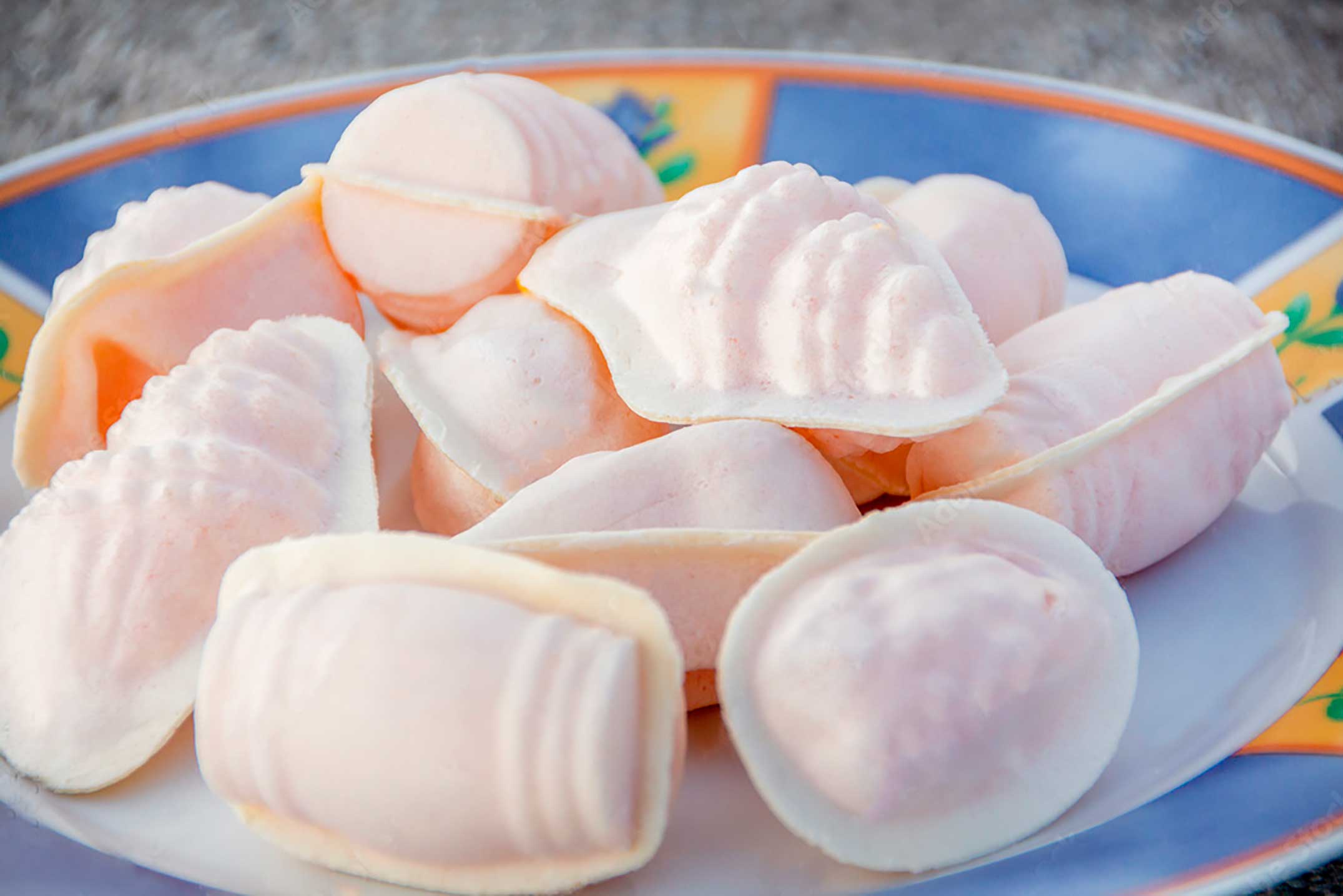
Portugal food, a real treat
That’s exactly the goal of our Portugal Food & Wine Tour! We invite you to spend 10 unforgettable days traveling through Portugal, exploring the culture, and, of course, tasting the rustic flavors of this Iberian Peninsula gem where all revolves around the table.
We’ll also get a glimpse into the country’s winemaking history, try authentic recipes passed down through generations, and make new friends along the way. We can’t wait to see you there!

